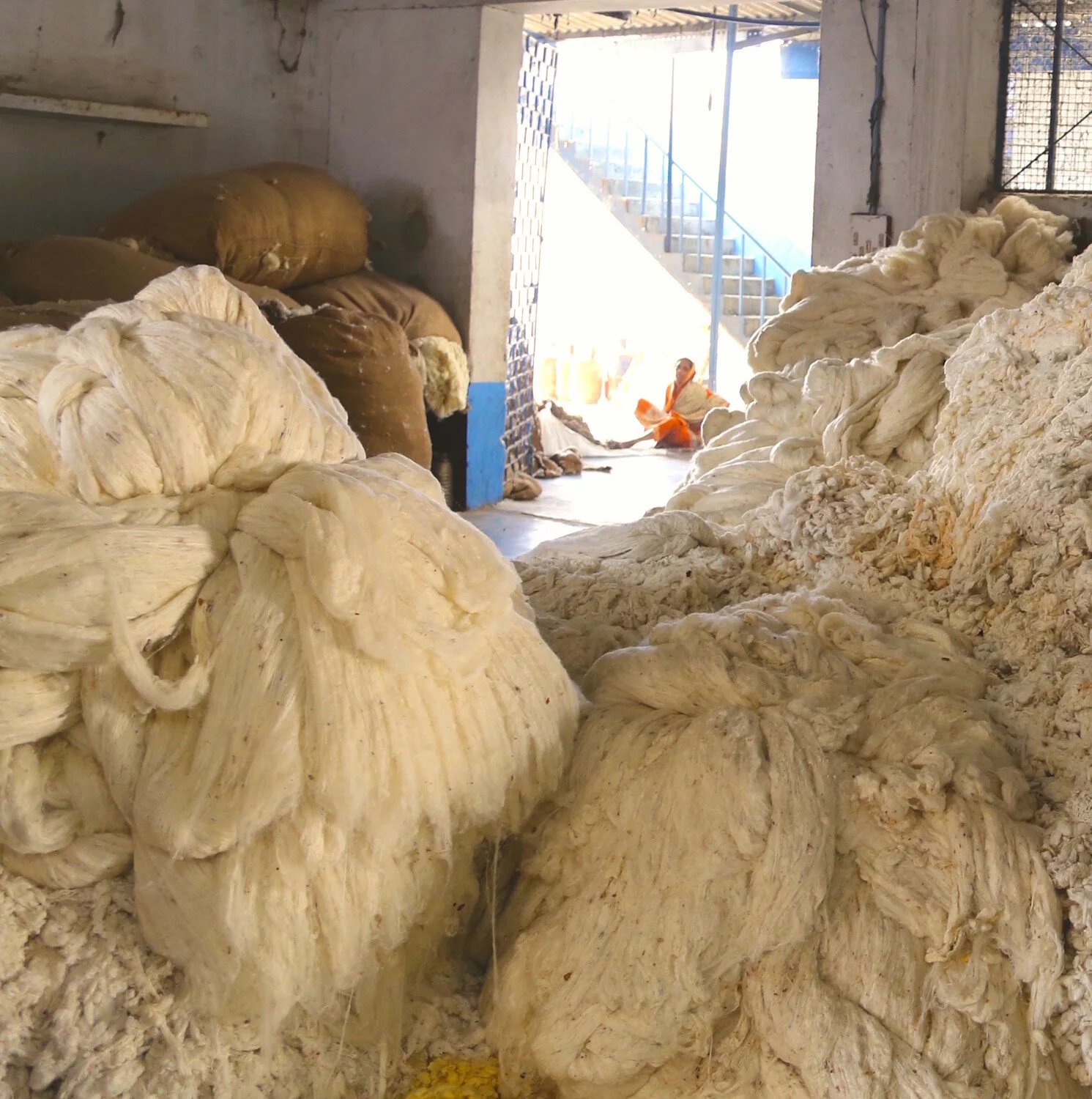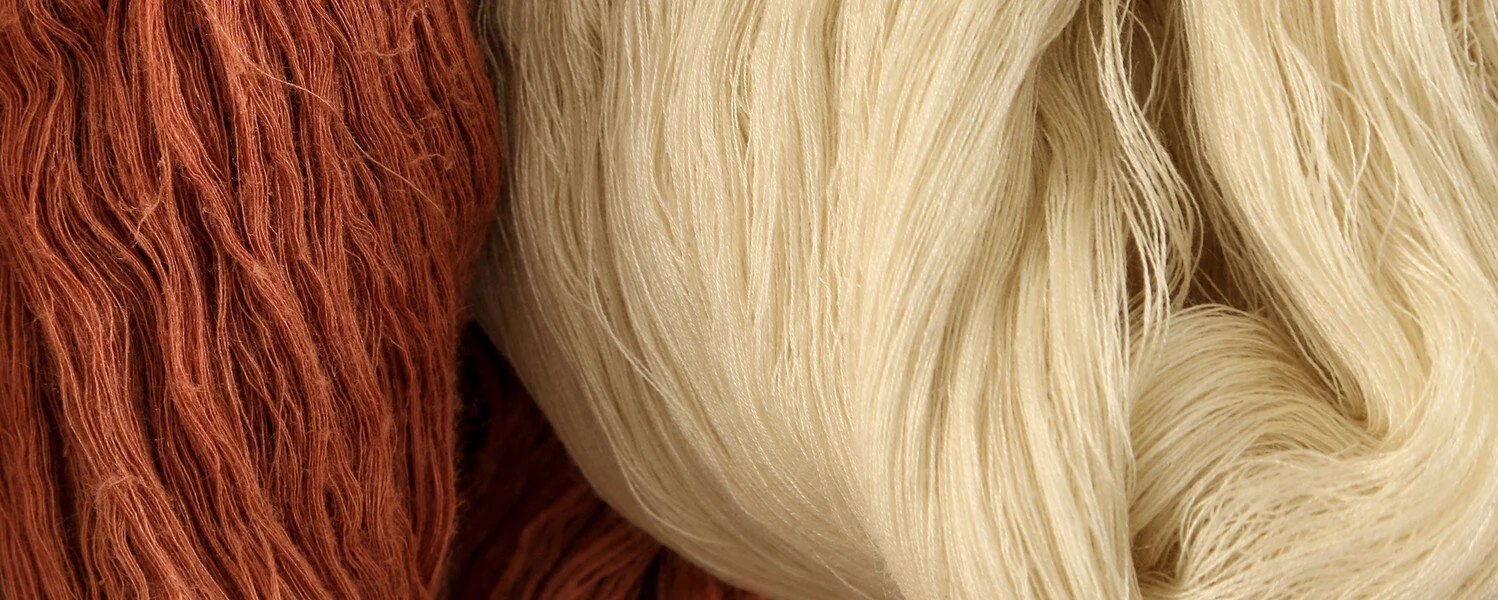Eri Silk
To make our scarves, we use Eri silk whose existence we didn’t know before starting our project.
In fact, most of us know only one variety of silk, mulberry. There are several others. Silk is a natural protein fibre that, after some processing and preparation, can be woven into fabric. Several insects and plants produce such fibre, but mainly it is the one produced by (moth) caterpillars that comes to mind when someone mentions silk. Among the silk produced by moth caterpillars, there are four or five most common ones; silk made by Bombyx mori, which is a domesticated variety of another wild moth, is most popular. We know it as mulberry silk because the caterpillar of this moth relishes mulberry leaves, preferably white mulberry leaves. Mulberry silk is shiny and lustrous and has been used, by most accounts, for 6000 years: first in China and later, as it spread across the legendary silk route, in other parts of the world.
But the silk we use is a lot humbler. It doesn’t perhaps have the same vaunted origins as mulberry. It is produced by a caterpillar of another domesticated moth, Samia cynthia ricini (Samia), which is mainly found in India (mostly in the north-eastern state of Assam), Samia feeds on mainly castor seeds and leaves, hence the name Eri since castor is called errandi in Assamese. The caterpillar cocoons itself in the fibre that it spins; and leaves it behind after its metamorphosis into a moth. The fact that the yarn is produced only after the caterpillar’s transformation (and escape) as a moth appeals to many people and gives marketers a pretext to label Eri as Ahimsa silk or peace silk. (In our team this is still being debated).
The soft cocoon shell, the Samia caterpillar leaves behind, has naturally a hole in it; thus yarn cannot be reeled off as in mulberry silk’s case. Instead, the staple is spun to make yarn, this makes Eri fluffy. Eri silk is also thicker than mulberry: the finest yarn we have found in stable supply is a 2 ply (strands) 140 Nm (kilometres per kilogram, higher the number thinner the yarn); and can contain higher levels of impurities. We source our yarn from a spinning mill in Malda, West Bengal, India, about 200 km from our own facility in Bhagalpur.
Eri makes up for its humbler history by the care it requires in spinning and weaving. However, it is worth the care. The woven fabric is soft (it gets even softer with use), durable (fabled to last generations), and easy to wash (we wash our scarves with hand using a soft detergent; sometimes we even put them in a washing machine).
We have read articles, even research papers, about Eri’s thermal property: it is often mentioned that Eri is cooler in summer and warmer in winter, but we have been wary of accepting it prima facie. Though with use we have noticed it indeed keeps you a tad cooler than other scarves; but this summer any scarf in Europe (or anywhere for that matter) would have been a terrible idea. It is a nice autumn scarf too; however, in winter it is a different experience! Eri keeps you warm and you do not even have the uncomfortable itch caused by wool.
We have learnt also that Eri blends very well with wool and the combination is even nicer, structurally and design-wise. We are off to making Eri/Cashmere scarves for this winter…



